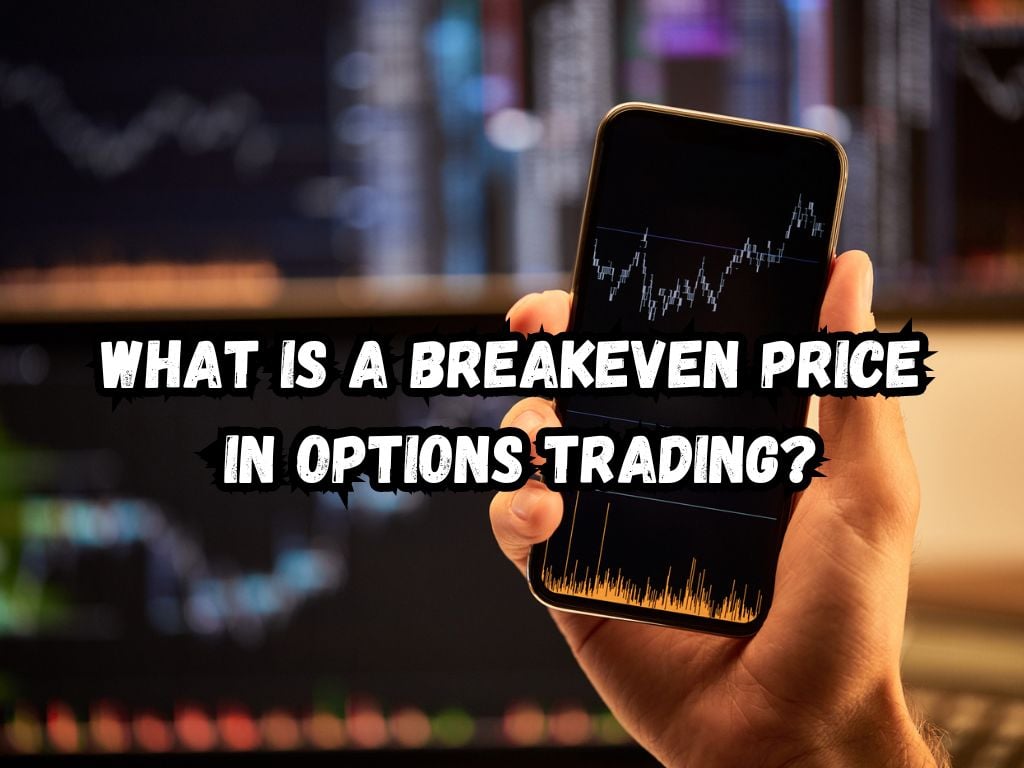Options trading stands as a strategic pillar of the investment world, drawing in traders with the allure of substantial profits and the excitement of managing risk.
Central to this financial maneuvering is the concept of the breakeven price, a term that often intimidates newcomers and yet is pivotal for seasoned veterans.
In the realm of options, understanding the breakeven price in options trading can be the difference between a calculated win and an unfortunate loss.
Understanding Options Trading
Options are contracts giving the holder the right, but not the obligation, to buy or sell an underlying asset at a specified strike price before a certain date.
Each option contract represents a potential transaction on a fixed number of shares, typically 100 shares in the stock market.
The strike price and expiration date are critical components in determining an option’s value along with other elements like volatility and prevailing interest rates.
Another key aspect is the premium, the price you pay to own the option, which is influenced by a myriad of factors from market conditions to underlying security performance.

What Is a Breakeven Price in Options Trading?
The breakeven price in options trading is not just a figure but a threshold of paramount importance. It’s not about making a profit but about not sustaining a loss.
For a call option, the breakeven price is the sum of the strike price and the premium paid. In simpler terms, it is the level that the underlying asset must exceed for the call option buyer to cover the cost of the premium.
Conversely, for a put option, the breakeven is the strike price minus the premium paid. Here, the underlying asset must drop below this point for the put option holder to recover the premium cost.
Understanding this breakeven point is essential because it informs traders of the minimum favorable outcome required to avoid a loss before they consider potential profits.
Factors Affecting the Breakeven Point
Market volatility significantly impacts option premiums, which, in turn, affects the breakeven.
High volatility can inflate premiums, making it harder to reach the breakeven point, although this also means the potential for greater profits.
Time decay, or the erosion of the value of an option as it nears its expiration date, also alters breakeven calculations.
Options lose value over time, meaning an investor might need the underlying asset to move more significantly to hit the breakeven point as time marches on.
Strategic Applications of Breakeven Price
Traders must weigh the breakeven price when selecting their trades. It helps them compare which options may offer better risk-reward parameters for their market views.
A clear understanding of where the breakeven lies aids in solidifying a trader’s commitment to a particular strategy in light of their risk tolerance and market outlook.
Risk management is another area where the breakeven price holds sway. Traders might place stop-loss orders relative to the breakeven, ensuring that they bow out of positions before incurring unnecessary losses.
Adjustments to options positions might also be warranted as market conditions shift, ensuring that traders aren’t caught off guard by evolving financial landscapes.
Advanced Considerations
Scenarios exist where multiple breakeven points come into the equation, such as with complex options strategies like iron condors or butterflies.
These are more intricate and may involve multiple premiums and differing strike prices, warranting a more sophisticated breakeven analysis. A trader may cross the breakeven point without necessarily locking in a profit.
It’s essential not to forget that fees and commissions can eat into what might look like a profitable position. Hence, surpassing the breakeven does not equate to ensuring profitability until all costs are considered.

Pro Tips for Traders
For traders to navigate the waters of options trading successfully, the calculation and understanding of breakeven prices should become second nature.
Upgrading one’s knowledge about different market scenarios and their impact on option valuations can be a game-changer.
It’s also recommended that traders keep abreast of market news as external factors can shift the breakeven tides without notice.
Frequently Asked Questions
What is the difference between breakeven price and strike price?
The strike price is the set price at which an option can be bought or sold. The breakeven price is the level the underlying asset must reach to cover the cost of the premium paid for the option.
Can the breakeven point change over the life of an option?
Yes, the breakeven point can shift due to factors like time decay and changes in the option’s premium as market conditions fluctuate.
How do fees and commissions affect the breakeven price?
Fees and commissions increase the cost of executing options trades, thus raising the breakeven point that the underlying asset must surpass for the trader to avoid a loss.
Is it possible to have a profitable trade without reaching the breakeven point?
No, a trade becomes profitable only after the breakeven point is surpassed, as this point accounts for covering all costs, including the premium paid.
How does implied volatility affect the calculation of breakeven price?
Implied volatility affects the option’s premium. Higher volatility typically leads to higher premiums, raising the breakeven price because the asset must move more significantly to cover the increased cost.
Conclusion
The breakeven price determines whether an options trade is merely a break from losses or the start of profits.
Its importance cannot be overstated, as it provides a clear benchmark for traders to plan and execute their strategies.
By integrating the breakeven analysis into their trading discipline, investors can ensure they approach each contract with a complete understanding of the necessary outcomes for success.


 Tags:
Tags:










